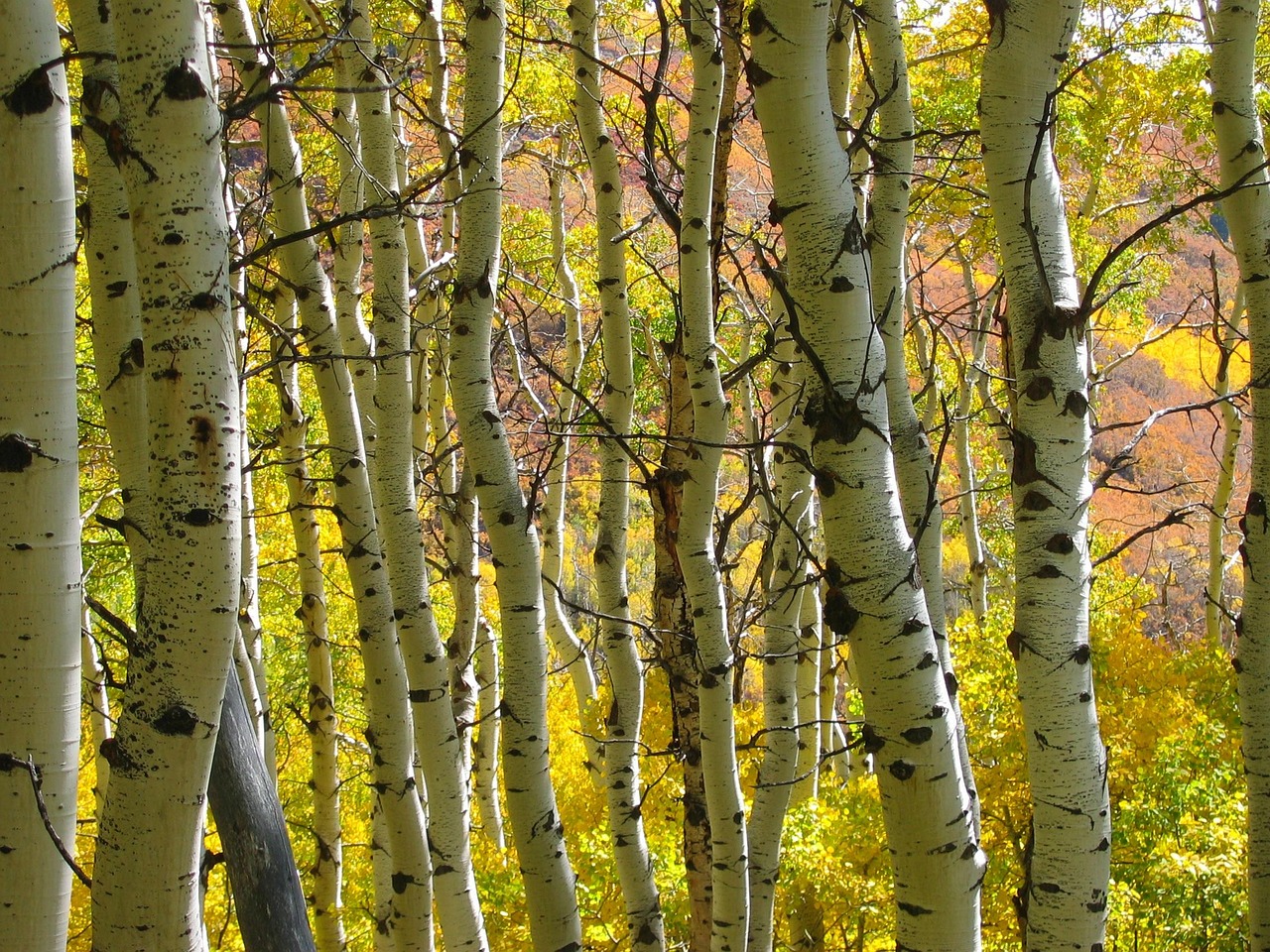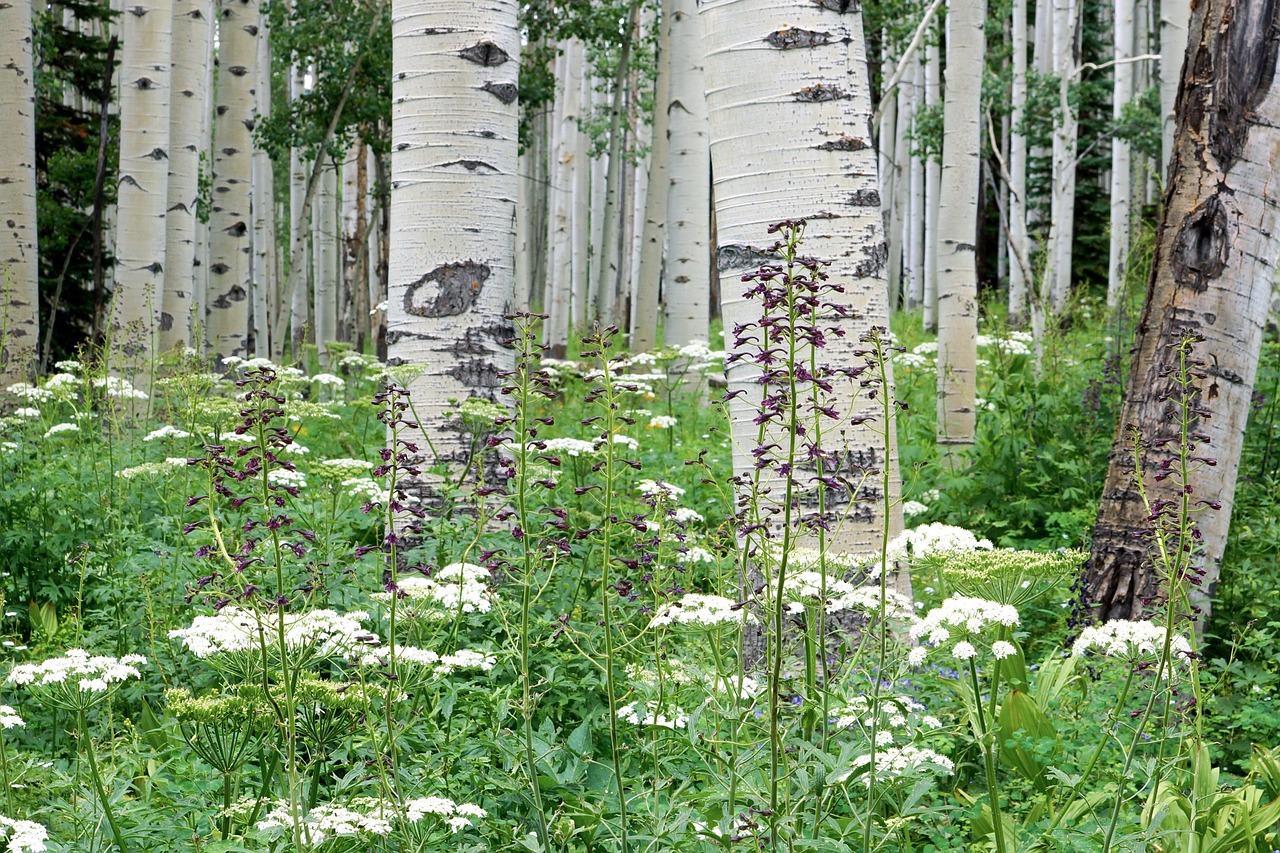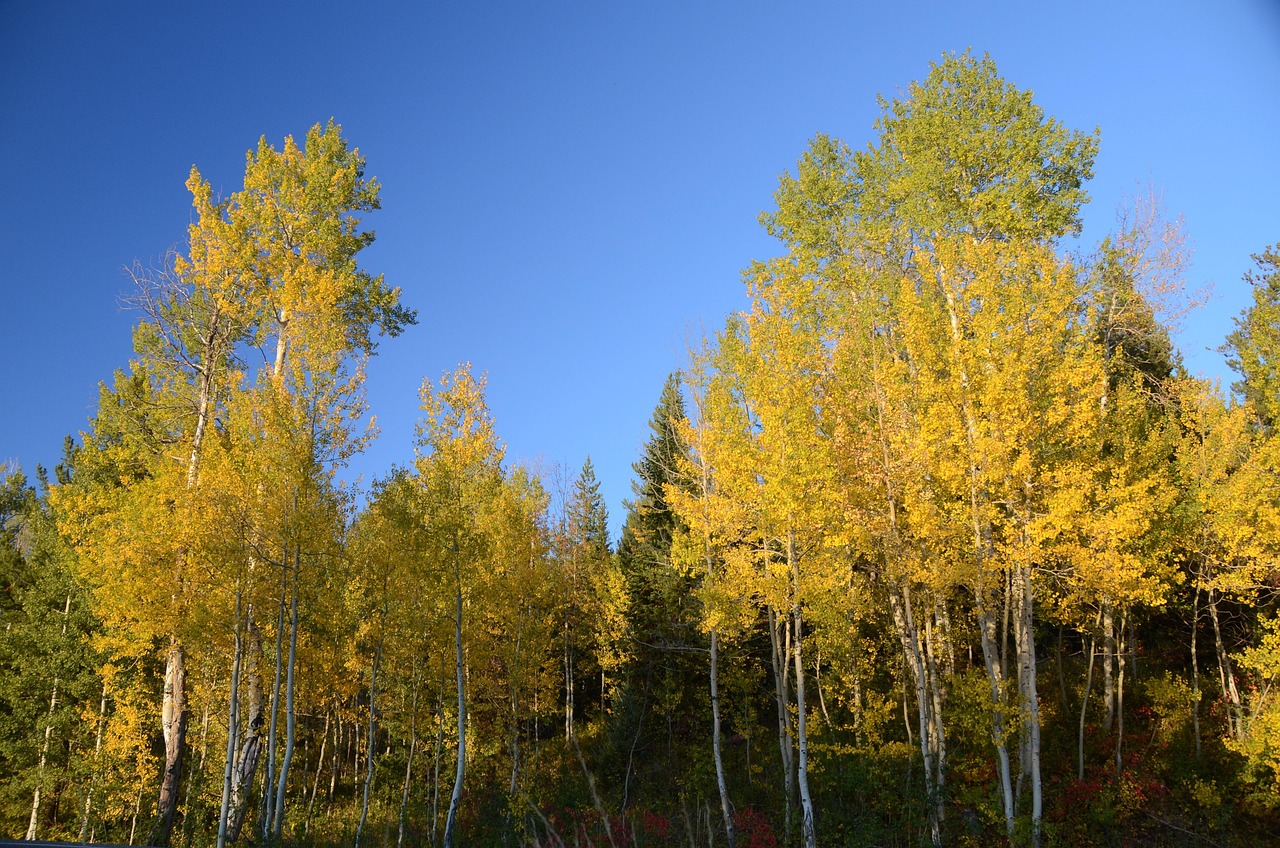Quaking Aspen trees are not notably deer resistant plants. While they may be less preferred by deer compared to other tree species, their tender new growth can still attract browsing when food is scarce.
Understanding Quaking Aspen Trees

Quaking Aspen, scientifically known as Populus tremuloides, is a deciduous tree native to North America. Known for its beautiful white bark and vibrant yellow foliage in the fall, this tree is a popular choice for landscapes and natural areas. Its unique ability to thrive in various environments makes it a favorite among gardeners and landscape designers alike.
These trees can grow up to 50 feet tall and are often found in clusters, as they propagate through underground roots. Quaking Aspens are particularly valued for their aesthetic appeal and ecological benefits. They provide habitat and food for numerous wildlife species, including birds and small mammals.
Deer Behavior and Feeding Preferences
Deer are known for their selective feeding habits. They often prefer certain types of vegetation based on availability, palatability, and nutritional content. Understanding deer behavior is crucial when considering which plants to include in a garden or landscape. Here are some factors influencing their feeding choices:
- Seasonal Availability: Deer may change their preferences depending on the time of year. In spring, they may seek out tender new growth, which can include young aspen shoots.
- Plant Species: Some plants are more appealing than others. Deer often prefer shrubs and flowers over trees, but they will eat young trees when food is limited.
- Environmental Factors: In areas with high deer populations or during harsh winters, deer may be more inclined to browse on less preferred species.
Quaking Aspen’s Resistance to Deer
While Quaking Aspen trees are not considered highly deer resistant, they possess certain characteristics that can make them less attractive to these grazers. The following traits influence their resistance:
- Bark Composition: The bark of Quaking Aspen contains compounds that can deter some herbivores, including deer. However, this does not guarantee complete protection.
- Growth Rate: Aspen trees grow quickly, often outpacing deer browsing pressure. This rapid growth may help them recover faster from any damage caused by deer.
- Group Growth Habit: As they often grow in clusters, if one tree is browsed upon, others nearby might remain untouched.
Conclusion on Deer Resistance
In summary, while Quaking Aspen trees may not be the first choice for deer, they are not entirely immune to browsing. In certain circumstances, especially when food is scarce, deer will nibble on their tender shoots and foliage. Understanding this dynamic can help gardeners make informed decisions when incorporating these trees into their landscapes.
| Characteristic | Description |
|---|---|
| Height | Up to 50 feet |
| Bark Color | White with black knots |
| Fall Color | Bright yellow |
Considering these factors will help you decide if Quaking Aspens are suitable for your landscaping needs while accounting for potential deer interactions.
Ecological Importance of Quaking Aspen Trees
Quaking Aspen trees play a significant role in their ecosystems. They offer numerous benefits that extend beyond their aesthetic value. Understanding these ecological contributions can enhance our appreciation for this remarkable species.
Habitat for Wildlife
Quaking Aspens provide critical habitats for various wildlife species. Many animals rely on these trees for shelter and food. Here are some key points regarding their ecological role:
- Birds: Numerous bird species, such as woodpeckers, sapsuckers, and songbirds, nest in the branches of Quaking Aspens. The trees’ cavities provide perfect nesting sites.
- Mammals: Small mammals like squirrels and chipmunks thrive in aspen groves. They use the trees for food and shelter, while larger mammals like deer may seek shade under their canopy.
- Insects: The leaves and bark of Quaking Aspens support various insect species, including aphids and beetles, which in turn serve as food sources for birds and other animals.
Soil and Water Conservation
Quaking Aspens contribute to soil health and water conservation in several ways:
- Soil Stabilization: The root systems of these trees help anchor the soil, preventing erosion, especially on slopes and in riparian zones.
- Water Filtration: Aspen trees can improve water quality by filtering pollutants from surface runoff as water passes through their root zones.
- Moisture Retention: Their leaf litter decomposes, enriching the soil with organic matter and promoting moisture retention, which benefits surrounding vegetation.
Cultural Significance of Quaking Aspen Trees
In addition to their ecological contributions, Quaking Aspens hold cultural significance for various communities, particularly among Indigenous peoples. These trees have been utilized in several ways:
Traditional Uses
Many Indigenous tribes have long recognized the value of Quaking Aspens. They have used the trees for:
- Medicinal Purposes: Various parts of the aspen tree, including the bark and leaves, have been used in traditional medicine to treat ailments such as colds and fevers.
- Craftsmanship: The wood is lightweight and easy to work with, making it suitable for crafting tools, baskets, and other items.
- Cultural Practices: Quaking Aspens often appear in cultural stories and ceremonies, symbolizing resilience and connection to nature.
Aesthetic Value
Quaking Aspens are not only ecologically beneficial but also visually stunning. Their striking white bark and shimmering leaves create beautiful landscapes. This aesthetic appeal can enhance residential properties, parks, and urban areas.
- Seasonal Changes: The vibrant yellow foliage in fall adds a burst of color to landscapes, attracting photographers and nature enthusiasts.
- Sound and Movement: The quaking leaves produce a soothing sound when rustled by the wind, contributing to a peaceful outdoor environment.
Challenges Facing Quaking Aspen Trees

Despite their numerous benefits, Quaking Aspen trees face several challenges that threaten their populations. Awareness of these challenges is crucial for conservation efforts.
Pests and Diseases
Quaking Aspens are susceptible to various pests and diseases that can weaken or kill trees. Some common issues include:

- Insect Infestations: Pests such as the Aspen borer can damage trees by tunneling through their bark, leading to decline.
- Diseases: Fungal infections like cankers can affect tree health, impacting growth and resilience against environmental stressors.
Environmental Changes
Climate change poses significant risks to Quaking Aspen populations. Changes in temperature and precipitation patterns can affect their growth and reproduction. Additionally, wildfires and habitat loss further threaten their survival.
Addressing these challenges requires concerted efforts from conservationists, ecologists, and the public. By understanding the importance of Quaking Aspens, we can work towards preserving this vital species for future generations.
Propagation and Growth of Quaking Aspen Trees
Quaking Aspen trees are known for their unique propagation methods and rapid growth. Understanding how these trees reproduce and grow can enhance efforts in conservation and landscaping.
Methods of Propagation
Quaking Aspens primarily propagate through two methods: sexual reproduction via seeds and asexual reproduction through root suckering.
- Sexual Reproduction: In the spring, male and female flowers appear on separate trees. Pollination occurs through wind, resulting in the production of small seeds. These seeds can disperse over long distances, establishing new trees in suitable environments.
- Asexual Reproduction: Quaking Aspens are famous for their ability to reproduce through root suckers. When a mature tree’s roots spread, they can produce new shoots, forming a clone of the parent tree. This method allows aspen groves to thrive as interconnected communities.
Growth Characteristics
Quaking Aspens exhibit several growth characteristics that make them unique:
- Rapid Growth: These trees can grow quickly, often reaching heights of 30 to 50 feet within 20 years under optimal conditions. Their fast growth makes them suitable for reforestation and restoration projects.
- Longevity: While individual Quaking Aspen trees may live for 50-150 years, the root systems can persist for much longer. Some aspen groves are known to be thousands of years old, showcasing their resilience.
- Light Requirements: Quaking Aspens thrive in full sun but can tolerate partial shade. They often establish in open areas, allowing them to maximize photosynthesis.
Environmental Preferences
Quaking Aspens are adaptable but have specific environmental preferences that influence their health and growth.
Soil Conditions
These trees prefer well-drained soils that are moderately rich in nutrients. Here are some important soil characteristics:
- pH Levels: Quaking Aspens generally thrive in slightly acidic to neutral soils (pH 5.5 to 7.0).
- Moisture Content: While aspen trees can tolerate some drought conditions, they prefer moist, well-drained soils found near rivers and lakes.
- Nutrient-Rich Soil: The presence of organic matter enhances growth, making areas with decomposing leaf litter ideal for young saplings.
Climate Preferences
Quaking Aspens are native to a wide range of climates across North America. However, they exhibit preferences for certain climatic conditions:
- Temperature: They thrive in temperate climates with cold winters and warm summers. These temperature variations help them establish strong root systems.
- Rainfall: An average annual rainfall of 20 to 40 inches supports their growth, particularly during the growing season.
- Elevation: Quaking Aspens are often found at elevations ranging from sea level to over 10,000 feet, demonstrating their adaptability to different environments.
Cultivation and Care of Quaking Aspen Trees
Cultivating Quaking Aspen trees requires an understanding of their needs and potential challenges. Proper care can help ensure healthy growth and longevity.
Planting Considerations
When planting Quaking Aspens, consider the following factors:
- Spacing: Due to their ability to sucker, it is essential to provide adequate spacing between trees to prevent overcrowding. Spacing them at least 10-15 feet apart allows for healthy growth.
- Sunlight Exposure: Ensure that the planting site receives full sun for optimal growth. Select locations that are not shaded by larger trees or structures.
- Soil Preparation: Before planting, test the soil for pH and nutrient levels. Amend the soil as needed with organic matter to enhance fertility.
Maintenance Practices
Regular maintenance helps keep Quaking Aspens healthy and thriving:
- Irrigation: While established trees are relatively drought-tolerant, young saplings may require regular watering during dry spells to establish roots.
- Pest Management: Monitor for signs of pests and diseases. Early intervention can prevent severe infestations and tree decline.
- Pruning: Prune dead or damaged branches to improve air circulation and overall tree health.
Cultivating Quaking Aspens can be rewarding, providing beauty and ecological benefits while requiring attention to their needs for optimal growth.
Additional Benefits of Quaking Aspen Trees

Beyond their ecological, cultural, and aesthetic significance, Quaking Aspen trees offer several additional benefits that make them a valuable addition to any landscape.
Carbon Sequestration
Quaking Aspens play an essential role in carbon sequestration. As they grow, these trees absorb carbon dioxide from the atmosphere, helping to mitigate climate change. The following points highlight their importance in this area:
- Rapid Growth Rate: Quaking Aspens grow quickly, allowing them to capture carbon at a higher rate compared to slower-growing species.
- Longevity of Root Systems: Their extensive root systems continue to sequester carbon even after the above-ground tree has died, contributing to long-term carbon storage in the soil.
Soil Improvement
The presence of Quaking Aspens can improve soil health in various ways:
- Organic Matter Addition: As leaves fall and decompose, they enrich the soil with organic matter, enhancing nutrient availability for other plants.
- Soil Microbial Activity: The decomposition process increases microbial activity, which is vital for nutrient cycling and soil health.
Ecosystem Resilience
Quaking Aspens contribute to ecosystem resilience by enhancing biodiversity. Their ability to support various wildlife species helps maintain ecological balance. Additionally, as a pioneer species, they often colonize disturbed areas, aiding in the restoration of habitats after events such as fire or logging.
Final Thoughts
Quaking Aspen trees are remarkable not only for their beauty but also for their ecological and cultural significance. While they are not entirely deer resistant, their unique characteristics contribute to their resilience in various environments. They support wildlife, improve soil health, and play a crucial role in carbon sequestration.
When considering planting Quaking Aspens, it is essential to account for their specific growth conditions and maintenance needs. With the right care, these trees can thrive and become a valuable part of your landscape while offering numerous benefits to the environment.
As stewards of the land, it is our responsibility to protect these trees and ensure their survival for future generations. By understanding their needs and challenges, we can enjoy the beauty of Quaking Aspens while contributing to a healthier planet.
